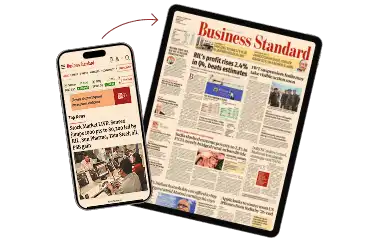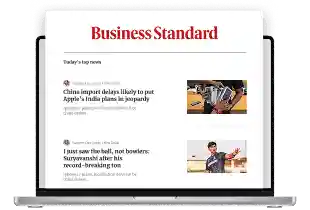With the India Couture Week 2022 (ICW 2022), hosted by the Fashion Design Council of India (FDCI) back in a physical avatar, the excitement is palpable. More so for designers like Kunal Rawal. The menswear specialist, who likes to go the whole nine yards, completes 15 years with ICW this year with almost 60 models, 70-80 looks, and multiple entry and exit points.
“Beautiful clothes need to be seen,” he smiled, as he explained that he prefers to create his own music, and push his storytelling.
The world has changed with Covid and digitalisation. People are now spoilt for choice and everything is one click away. Among other things, what has altered is the psychology of the menswear market.
“I represent GenZ, and we really know what we want. The market has evolved, and we are living in a global India,” said Rawal. This sentiment is reflected in men’s choice of clothing too. Earlier menswear was restricted to strictly traditional, and there had to be certain accompaniments to, say, look like a groom.
Now those boundaries have been broken. “We are fast moving away from black and greys to military green, pastels and whites. The image of the man has changed from masochism to a more pleasing vulnerability, so there are fewer prejudices around the menswear market,” Rawal said. “Men now want hand-made products and not assembly lines. ‘Smart’ design is what works.”
The definition of luxury in the menswear market has changed – it is less about the perfect fit and more about comfort, and adding gender neutrality to the clothing. That’s why last year Sonam Kapoor, his showstopper, wore a menswear jacket along with dhoti pants. It is this fluidity that menswear is also celebrating along with breaking away from size-ism, giving various options for men of different ages and stages.
Rawal, who is a master of many experiments like collaborating with Salman Khan and Being Human, launching a line for children and designing the uniform for Indian Premier League’s Rajasthan Royals, has come a long way from his first foray in 2006, with a label called Dstress.
Away from the usual tweeds, this year men will be wearing paisleys and elegant drapes, and will be swathed in the finest brocade made in collaboration with Ekaya as a medium to exude luxury, he said. This, along with what is perceived as fashion for men – expensive wristwatches, leather footwear, designer eyewear, cufflinks, and pocket squares. “In India, we have so much diversity in every 500 km we travel. There are new things to discover. As a brand it is imperative to look at functionality and mix it with tradition,” said Rawal.
The buzzword is “being comfortable” in menswear and most prefer meticulous pattern-cutting to achieve this. “We have introduced sweat-absorbent linings, as you need your garment to multitask, since people who are consuming couture are changing along with their needs,” he explained.
Functionality and the need for mobility, too, are a game changer in menswear designs, including in wedding-wear. From adding hidden pockets that don’t add bulge to doing away with formality in dressing are becoming the norm. “The key is personalisation. So even embroideries are now becoming a mainstay in menswear fashion,” Rawal said.
The London College of Fashion graduate indulges in what he calls visual manipulation, adding unpredictable surprises in tailoring, like texture on texture, which gives an all-new fabric. “Menswear is an unsaturated market. There is no set benchmark. You can do what you like and make new trends.” And so menswear designers like him are thinking beyond sherwanis and bandhgalas.










)

